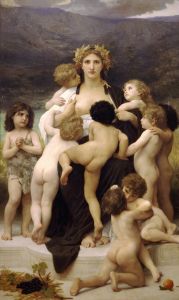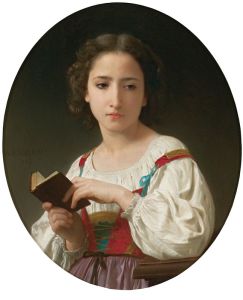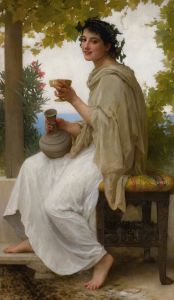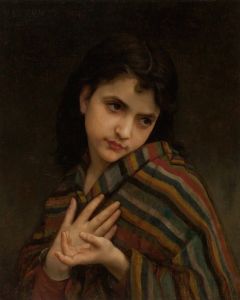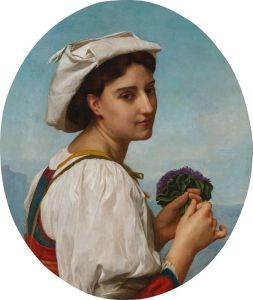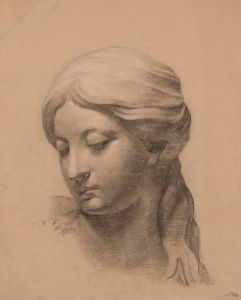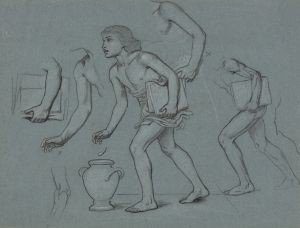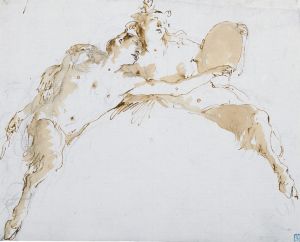
Nymphs and Satyr
A hand-painted replica of William Bouguereau’s masterpiece Nymphs and Satyr, meticulously crafted by professional artists to capture the true essence of the original. Each piece is created with museum-quality canvas and rare mineral pigments, carefully painted by experienced artists with delicate brushstrokes and rich, layered colors to perfectly recreate the texture of the original artwork. Unlike machine-printed reproductions, this hand-painted version brings the painting to life, infused with the artist’s emotions and skill in every stroke. Whether for personal collection or home decoration, it instantly elevates the artistic atmosphere of any space.
Nymphs and Satyr is an oil painting created in 1873 by the French academic painter William-Adolphe Bouguereau. The artwork is widely regarded as one of Bouguereau's masterpieces and exemplifies his technical skill, attention to detail, and mastery of classical themes. The painting measures 260 cm × 180 cm (102.4 in × 70.9 in) and is currently housed at the Clark Art Institute in Williamstown, Massachusetts, United States.
The painting depicts a mythological scene inspired by ancient Greek and Roman traditions. It shows a group of four nymphs playfully pulling a satyr into a pond. The satyr, a creature from classical mythology often associated with Dionysian revelry, is portrayed as resisting the nymphs' efforts, though his expression suggests a mix of reluctance and amusement. The nymphs, mythological female spirits of nature, are depicted as youthful and graceful, embodying an idealized vision of beauty. The scene is set in a lush, wooded environment, with soft lighting that enhances the figures' lifelike appearance and highlights Bouguereau's skill in rendering textures, anatomy, and movement.
Bouguereau was known for his ability to blend classical themes with a highly polished, academic style. In Nymphs and Satyr, he demonstrates his expertise in creating a harmonious composition, balancing the dynamic poses of the figures with the serene natural background. The painting reflects the 19th-century fascination with mythology and the idealization of the human form, themes that were central to Bouguereau's body of work.
The painting was first exhibited at the Paris Salon of 1873, where it received significant attention and acclaim. It was later purchased by the prominent New York art collector John Wolfe, who displayed it in his home. After Wolfe's death, the painting was acquired by the Clark Art Institute, where it remains a highlight of the museum's collection.
Nymphs and Satyr is often cited as an example of Bouguereau's ability to combine technical precision with a romanticized vision of classical antiquity. Its enduring appeal lies in its masterful execution and the timeless allure of its mythological subject matter.





